By Mark Daffey
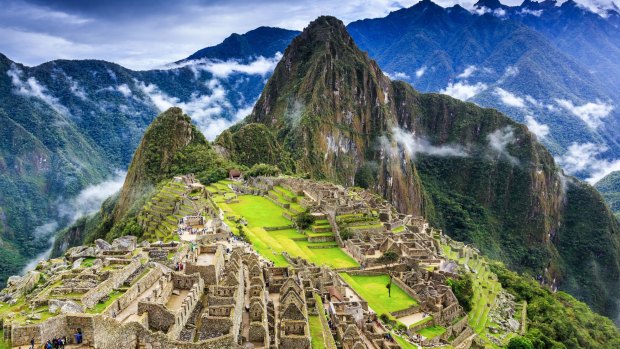
Machu Picchu, Peru.Credit: iStock
MACHU PICCHU
On a drizzly morning in 1911, American scholar and explorer Hiram Bingham stumbled upon one of the greatest archaeological finds of the 20th century. High on a ridgeline in the Andes, above a crook in the Urubamba River, Machu Picchu – Bingham's "Lost city of the Incas" – lay hidden for centuries. Its purpose remains unclear. Bingham thought it was a religious centre; others believed it was a sanctuary for virgins, or a summer retreat for Incan royalty. The Spanish conquistadors who hastened the collapse of the Inca Empire in the 16th century were unaware of it. The scene could barely differ more today, where as many as 6000 visitors pour through its gates to wander among its many terraced dwellings, explore the Temple of the Sun and the carved ritual stone known as the Intihuatana, and to climb the sugarloaf-shaped Huayna Picchu.
QORIKANCHA
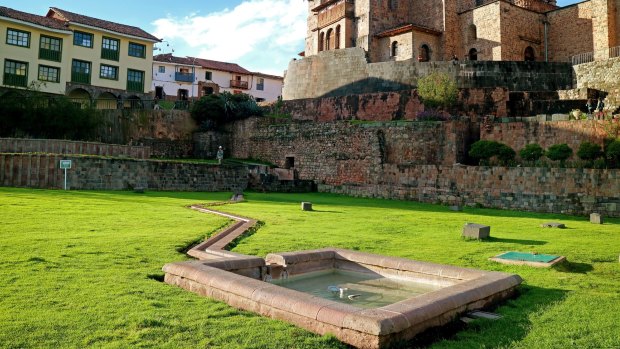
Qoricancha.Credit: iStock
The most important temple in the Inca Empire, in Cusco's historical centre, was dedicated to Inti, the ancient sun god. Courtyards filled with gold statues, and walls and floors once covered in sheets of gold and silver, were plundered by the Spanish conquistadors who built a Christian church on top of the ruins. Subsequent earthquakes damaged the church but its foundations, built out of interlocking blocks of stone by the Incas, still stand – a testament to their sophisticated masonry skills.
SACSAYHUAMAN
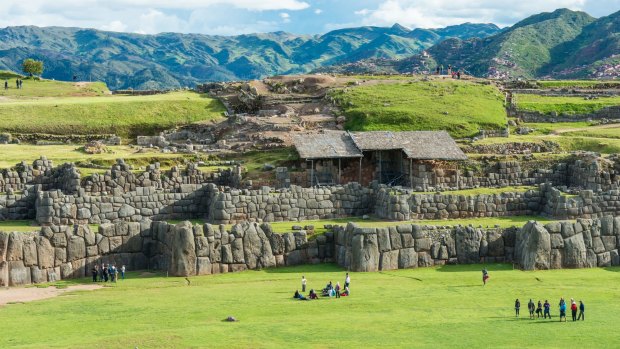
Sacsayhuaman.Credit: iStock
Three zig-zagging terraced walls, each 400 metres long and six metres high and constructed using hefty stones on a hill above Cusco's main square, are said to represent the head and teeth of a puma, the animal symbolising the Inca dynasty. The fortress where the Incas fought the Spaniards was built by the emperor Pachacuti in the 15th century. Its dry stone walls were fit with such precision that even a single piece of paper couldn't squeeze between the stones. Come during the winter solstice in late June, when Sacsayhuaman hosts the colourful Inti Raymi festival honouring the sun god.
OLLANTAYTAMBO
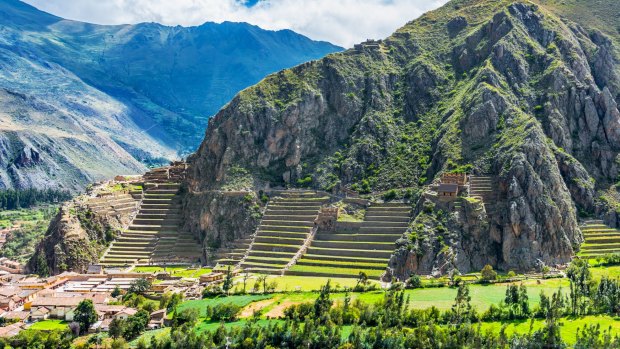
Ollantaytambo, Peru. Credit: iStock
The royal estate of Pachacuti spreads across the valley floor and climbs the hillsides above the point where the Urubamba and Patakancha Rivers meet. Ollantaytambo was built as a ceremonial and administrative centre and is arguably the Sacred Valley's most impressive Inca structure. Tumbling down from a ridgeline bookended by rock outcrops is a series of agricultural terraces. A steep stairway through them leads to remnant granaries, temples and garrisons. The starting point for the Classic Inca Trail to Machu Picchu is located close to here and the town is a compact, neatly designed example of Inca city planning, with grid-patterned cobblestone streets, hidden courtyards and spring-fed irrigation channels.
LLACTAPATA
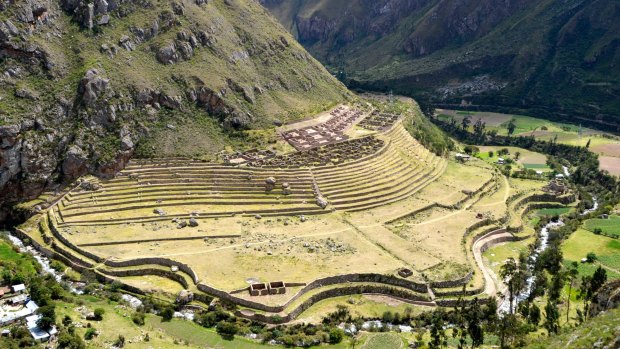
Ancient Llactapata Inca ruins.Credit: iStock
Hikers tackling the Classic Inca Trail gain their first glimpse of Machu Picchu from the Inti Punku, or Sun Gates. Those who approach the ruins via the far less crowded Salcantay route do so from Llactapata, a Quechuan name translating – appropriately, given its lofty perch on a neighbouring mountain range above the Aobamba River – as 'high town'. Llactapata's importance to the Incas was probably quite lowly, having served as a rest stop and roadside shrine on the journey to Machu Picchu, and perhaps as an astronomical observation post. But its significance today is more pronounced, for nowhere else can visitors see Machu Picchu like they can from Llactapata's elevated perspective. From these ruins, no crowds are visible – just cascading grey-stone terraces crowned by a row of jumbled shards in the only jungle clearing in sight. And at worst, only a handful of other trekkers will share the view.
CHOQUEQUIRAO

Ruin of Choquequirao.Credit: iStock
Sixty kilometres from Machu Picchu and three times as large, Choquequirao – meaning 'cradle of gold' in the local Quechua language – receives a fraction of Machu Picchu's visitors. That's because access is only possible via a two or three-day hike. But after the Peruvian government promised millions of dollars to develop the site in late 2017, including a cable car that will whisk travellers there in just 15 minutes, visitor numbers are expected to jump from 5800 currently to 200,000 in the first year (compared with 1.2 million visitors at Machu Picchu). Sprawled across three hilltops and 12 sectors, Choquequirao is a tangle of Inca stairways and terraces cut into a steep, jungle spur above the Apurímac River. Amazingly, just 30 per cent of Choquequirao's ruins have been freed from their jungle surroundings.
Mark Daffey travelled courtesy of LATAM and World Expeditions. See worldexpeditions.com/Peru and peru.travel/en-au
Sign up for the Traveller Deals newsletter
Get exclusive travel deals delivered straight to your inbox. Sign up now.